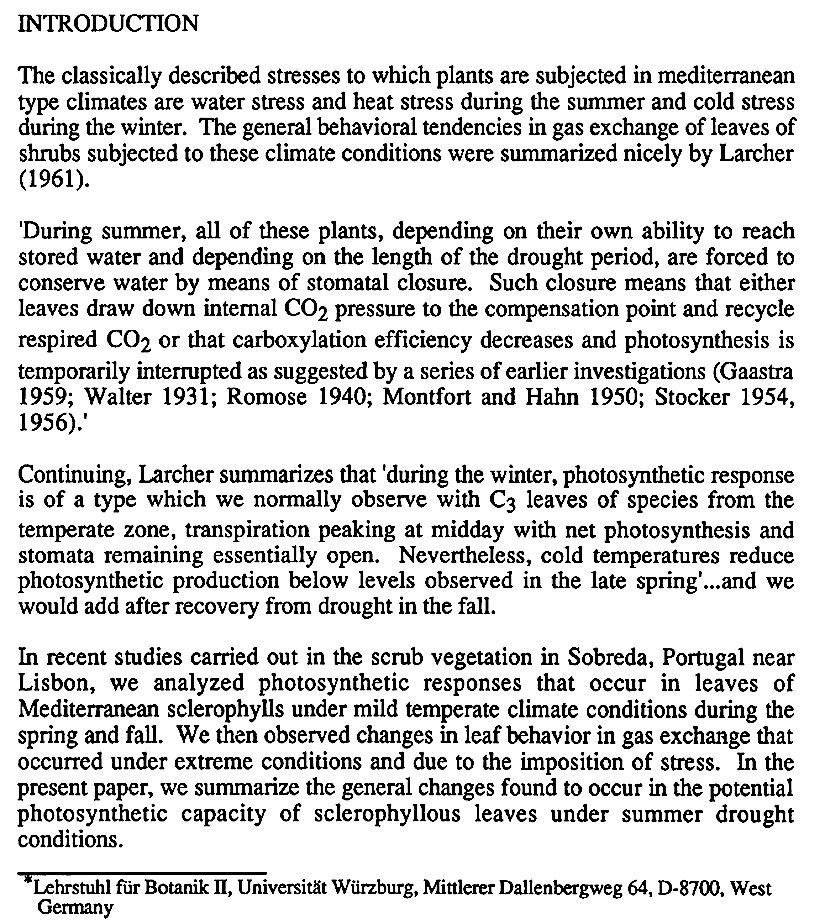Changes in photosynthetic capacity, carboxylation efficiency, and CO2 compensation point associated with midday stomatal closure and midday depression of net CO2 exchange of leaves of Quercus suber
by Tenhunen J. D., Lange O. L., Gebel J., Beyschlag W., Weber J. A. (1984)
Lehrstuhl für Botanik II der Universität, Mittlerer Dallenbergweg 64, D-8700, Würzburg, Germany.
J. A. Weber, Biological Station, University of Michigan, Ann Arbor, USA
===
In Planta 162: 193-203 – doi: 10.1007/BF00397440. –
https://www.ncbi.nlm.nih.gov/pubmed/24253090
Abstract
The carbon-dioxide response of photosynthesis of leaves of Quercus suber, a sclerophyllous species of the European Mediterranean region, was studied as a function of time of day at the end of the summer dry season in the natural habitat.
To examine the response experimentally, a “standard” time course for temperature and humidity, which resembled natural conditions, was imposed on the leaves, and the CO2 pressure external to the leaves on subsequent days was varied.
The particular temperature and humidity conditions chosen were those which elicited a strong stomatal closure at midday and the simultaneous depression of net CO2 uptake. Midday depression of CO2 uptake is the result of
i) a decrease in CO2-saturated photosynthetic capacity after light saturation is reached in the early morning,
ii) a decrease in the initial slope of the CO2 response curve (carboxylation efficiency), and
iii) a substantial increase in the CO2 compensation point caused by an increase in leaf temperature and a decrease in humidity.
As a consequence of the changes in photosynthesis, the internal leaf CO2 pressure remained essentially constant despite stomatal closure. The effects on capacity, slope, and compensation point were reversed by lowering the temperature and increasing the humidity in the afternoon. Constant internal CO2 may aid in minimizing photoinhibition during stomatal closure at midday.
The results are discussed in terms of possible temperature, humidity, and hormonal effects on photosynthesis.



You must be logged in to post a comment.